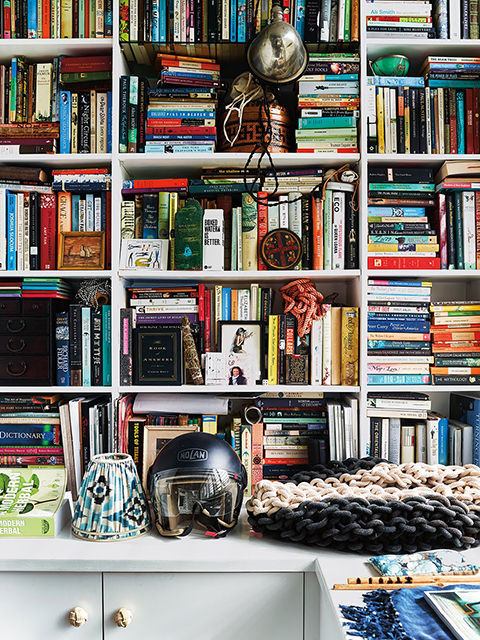We may earn revenue from the products available on this page and participate in affiliate programs.
For most of my life, one thing was true: My room was usually messy, but if it was clean, you could rightly assume I was going through something. My dorm room never sparkled more than the week my thesis was due. My apartment was spick and span in the wake of a rough breakup. Making my bed would be a half-hearted attempt at feeling on top of things. Hanging up my clothes, a way to perform a demonstrably responsible act when I felt like I was dropping the ball in other parts of my life.
I would swoop through my room like a reverse tornado—a straightening, folding, scrubbing, vacuuming tornado—whenever I needed to focus on something else that was more challenging.
Eventually, I was diagnosed with ADHD, and gradually, this changed. ADHD is often imagined through a particular archetype: a gregarious boy with a messy room and a short attention span. When prescribed medication, he becomes focused, disciplined, and tidy. But in women, ADHD can look very different, thanks to socialized gender roles—which is why it’s often mis- and underdiagnosed. Researchers have only recently noted that intense self-esteem issues are common for women with ADHD. We often struggle to keep up with all of the roles we assume we need to play—and we often end up feeling like failures as a result. This is why, prediagnosis, my eternally messy room constantly weighed on my thoughts. I struggled to fully focus on whatever I needed to focus on—the idea of my messiness loomed, and I felt like a deadbeat as I tried to address even the simplest task.
Growing up, the only part of my personality that overlapped with the archetype of ADHD was my messiness. I’d stay up until early morning doing homework after hours of dance practice, and I’d get up early to put on makeup and make myself a smoothie. But the mess in my room remained, and my ADHD went unnoticed, even though I frequently felt anxious, depressed, and exhausted. Eventually, I found a therapist I trusted, and then a psychiatrist who, after a few sessions, diagnosed me—and I immediately began to picture my life as a tidy person.
But that’s not what happened. Like any good medication, mine doesn’t change who I am. It simply makes accepting who I am way easier. My messiness has remained, and instead of rushing to fix it in moments when I feel anxiety creep in, I am able to sit with it. I tend to my priorities—my writing, my cooking, my yoga practice, my relationships—without a mental image of my domestic mess obscuring what’s at hand.
I still buy plants, rugs, tchotchkes, and amber lightbulbs to make my room a calming environment. I rarely leave dishes or even eat in my room—this feels more along the lines of health and hygiene to me, which are way higher up on my lifestyle hierarchy than tidiness. Plus, my diagnosis has helped me to pinpoint the separate urge to shield my roommates from my messiness. In contrast to the useless anxiety I felt about my room, this reflex to keep my mess sequestered away from shared spaces is one that I’ll continue to act on.
The measured, intentional way I go about shaping my living space now has made my room a place I love being. I’m now able to focus on my work without letting the chaos surrounding me creep into my writing. Unless, like now, this chaos is the very subject I’m writing about. In which case, I gladly look up, take in all of the clothes on my floor, and hope I write with the same clearheaded acceptance that I now see my mess with.
See more wellness stories: Stubborn People Might Actually Live Longer, According to a New Study 20 Things You Can Do Today to Make Your Life Easier This Trending Scent Will Put Your Mind and Body at Ease
